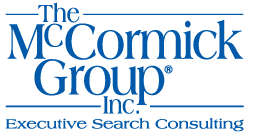
This article has been edited by Greg Lambert of the Three Geeks and a Law Blog.
Representatives from virtually all large law firms are claiming that innovation is critical to their future. Indeed, in the recently released Altman Weil, 2020 Law Firms in Transition Survey, 75 percent of the responding firms reported including innovation initiatives in their strategic plan and also have created special projects focused on innovation.
But when it comes to empowering professionals within the firm to move those initiatives forward, a McCormick Group White Paper revealed quite a different story. We found that a majority of firms don’t have senior officials with clear innovation responsibilities, and that outside of the AmLaw 100, those officials are quite rare. The report, entitled ”Innovation and Value Professionals in the AmLaw 200,” revealed that 37 of the AmLaw 100 firms have an innovation professional with a Chief or Director title. However, there was a significant dropoff in the second 100 as only nine of those firms had a high-level professional with an Innovation title.
Our study was based on a thorough review of AmLaw 200 law firm websites, LinkedIn, and the Leadership Directories guide to Law firms. We focused on those professionals who hold Chief or Director titles in three specific types of disciplines: innovation, client value, and legal project management.
We classified innovation in a number of ways:
- Internal innovation—Perhaps most common in the technology realm, this type of innovation is focused on improving processes so that the firm operates more efficiently. While this type of innovation invariably does have an impact on client service, its primary focus is internal. An example of this is the creation of financial dashboards so that the firm can better track things like billing statistics, accounts payable, and accounts receivable.
- Legal process improvement—-Often accomplished as an outgrowth of legal project management, this type of innovation is focused on improving the delivery of traditional legal services in a variety of ways. This would include the use of alternative staffing so that the most cost-effective service providers are handling key aspects of a legal matter.
- Cataloging —Innovation that is designed to keep clients better informed on various legal developments. An example of this would be a real-time state-by-state regulatory catalog that will update the clients on developments in particular legal areas.
- Uniform document preparation—-This type of innovation largely uses artificial intelligence to create templates of documents that are commonly used in the practice of law. An example of this would be a protocol for nondisclosure agreements that would allow for the alteration of documents based on a set of computer-generated queries.
- Predictive analytics—-Again, artificial intelligence would be used as a basis for this type of innovation. An example would be to use data retrieved from different court cases to predict how a particular court might determine the result from a particular set of facts.
- Data sharing focused on improving client service— This would often involve the creation of protocols so that the firm and client can share important data about current engagements (or even the client portfolio as a whole), whether it be the status of cases, the billing process, staffing, or other data important to the client.
- Direct operational service to the law department— Because law firms often have much more data and technological expertise than corporate law departments (particularly small law departments), firms can provide advice and services to help the client organize its own internal operations. (This is an example of where innovation and client value intersect.)
Client Value and Legal Project Management
In the area of value, we focused on professionals that interact with the client and the leadership of the law firm with the goal of improving service to the client. Include were those officials who handle client feedback, as long as they played a role in ensuring that client suggestions were incorporated in current and future engagements.
We also focused on those professionals who had legal project management and project improvement in their purview, but we did not include pricing professionals who merely analyze data and suggest pricing alternatives to partners.
We did not limit our analysis to those officials with “innovation,” value,” or “legal project management” in their titles. Among the officials included in our analysis were those with the following titles: Chief Legal Operations Officer, Chief Practice Officer, Chief Practice Management Officer, Chief Services Officer, Chief Knowledge Management and Client Services Officer, Director of Legal Services Delivery, and Chief Knowledge Services Officer.
Key Findings
We studied the AmLaw 200 firms included in the 2019 edition of the American Lawyer. We found the following:
46 firms had a Chief-level or Director-level officer with an Innovation title and 12 similar professionals with a value title. (Two of those had had the dual Chief Innovation and Value Officer title). 27 firms had a chief or director with a legal project management title. Finally, there were 16 firms with other high-level professionals with innovation and value within their purview (see above listing for examples of those titles.)
All in all, 70 firms or 35 percent of the AmLaw 200 have a Chief or Director handling innovation, value, legal project management, or a similar function. Of those firms, almost half, or 34, have leadership officials with responsibility for two or more of these functions. Three firms have three different disciplines managed by a Director or Chief. (Those firms were Baker & McKenzie, DLA Piper, and Shearman & Sterling).
The following charts reveal that the larger firms are more likely to have these officials than those firms in the AmLaw second hundred.




Different Models and Reporting Structures
We also studied a variety of models and reporting structures for innovation and value in law firms. Among them:
- The unitary model, in which there is a Chief Innovation and Value Officer, who is in charge of both the innovation and value functions. Examples of these are Ballard Spahr, Blank Rome, and Thompson Hine. Generally, these report to the Chief Operating Officer and/or the Chairman.
- Separation of the innovation and value functions into two different departments, with a chief or director heading each function, and again reporting to a COO. Examples include BakerHostetler, Reed Smith, and Goulston & Storrs.
- A slightly different model which does separate the innovation and value functions, but with reporting responsibilities to a Chief Practice Officer or another person with a strong background in Innovation and Value, but who is taking on increased responsibilities in related functions. Examples include Baker McKenzie, Perkins Coie, and Barnes & Thornburg.
Career Paths of Chief Innovation and/or Value Officers
We studied 29 professionals with chief innovation and/or value titles, and found some interesting results:
- Just under half of those were attorneys, and virtually all of those had practiced law in large firms.
- Nine had previous high-level jobs in knowledge management.
- Seven had held previous high-level positions in pricing or legal project management.
- Six had previous positions in strategy, program management, or as a chief of staff.
- Three previously had practice management roles.
- Four had previous experience in a major accounting or consulting firm.
- Two had previous experience in financial services.
Future Career Paths
We also discussed future roles that these professionals are likely to play in the evolving legal environment.
We expect those officials to take even greater leadership positions at the firms. Historically, the route to the Chief Operating Officer in law firms was limited to those with experience in internal finance and general operations. However, we believe that experience with the actual lifeblood of the law firm—the actual engagements with clients—will be more important in the long run.
So far, we are unaware of anyone who has made the jump from an innovation or client value position to the COO slot at an AmLaw 200 firm. There are a few who are currently COOs at smaller firms. And Steven Petrie, the current COO of the Americas for White & Case, had been Chief Strategy Officer for Faegre Baker Daniels and Director of Practice Operations for that firm before that.
What we have seen is the elevation to the role of Chief Practice Officer or some similar title. Those positions are leadership roles focused on the delivery of legal services, as opposed to functions such as internal finance, technology, and facilities. For several years now, Three Geeks co-founder Toby Brown has been the CPO at Perkins Coie, where he is in charge of innovation and value, as well as partner recruiting. At Barnes & Thornburg, Jared Applegate became Chief Legal Operations Officer in early 2019, after serving as the Director of Pricing (which encompassed legal project management as well) for several years.
A somewhat different elevation occurred at Bryan Cave Leighton Paisner two years ago when Chris Emerson was promoted from Chief Practice Economics Officer to Chief Legal Solutions Officer. His current position also includes being the leader of Cantilever, Bryan Cave’s firm’s legal operations consulting group, which enables corporate law departments to operationalize the delivery of legal services from all types of legal providers.
Also included in the report are:
- The impact of Covid-19 on the acceleration of innovation in the legal sector
- The importance of London in the development of innovation and value
- Profiles of nine law firms and their leading innovation and value professionals
- Other resources for information on innovation and value.
(Steve Nelson would like to thank Cassie Battle for her contributions to the report and this article. For a copy of the full report, please contact Steve at snelson@tmg-dc.com.)
Steve Nelson is Executive Principal with The McCormick Group, where he conducts partner-level searches and searches for high-level administrative professionals for law firms. He is a Fellow with the College of Law Practice Management.
 Steve Nelson is an executive principal at The McCormick Group, an executive search firm based in Arlington, Va. Steve conducts partner-level searches, searches for in-house counsel, and searches for administrative professionals for law firms. In addition, he serves as a consultant for law firm merger planning, practice area expansion, and in recruiting strategy. Steve is a former attorney with 17 years in legal journalism and publishing and is a Fellow of the College of Law Practice Management. Follow him @SKNLegal.
Steve Nelson is an executive principal at The McCormick Group, an executive search firm based in Arlington, Va. Steve conducts partner-level searches, searches for in-house counsel, and searches for administrative professionals for law firms. In addition, he serves as a consultant for law firm merger planning, practice area expansion, and in recruiting strategy. Steve is a former attorney with 17 years in legal journalism and publishing and is a Fellow of the College of Law Practice Management. Follow him @SKNLegal.

